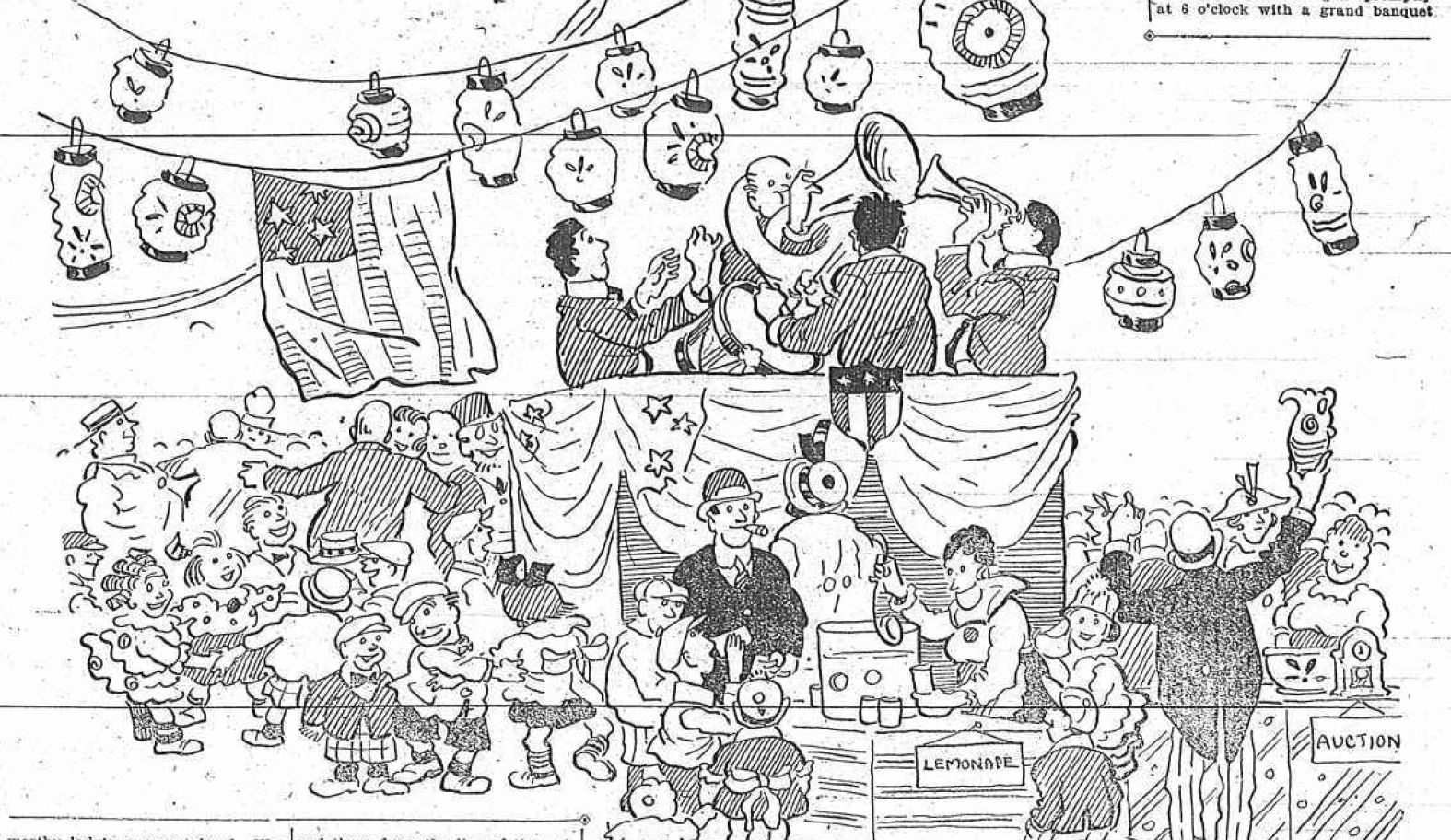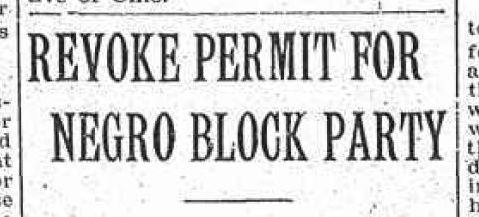TO DENY A “COLORED” BLOCK PARTY (1920)

******************************************************************************************************************************** Brownstone Detectives investigates the history of our clients’ homes. The story you are about to read was composed from research conducted in the course of one of those investigations. Do you know the history of YOUR house? ******************************************************************************************************************************** Block party season upon us. It is a time of blocked-off streets, replete with the sounds of children happily playing, the smells of barbecues up and down the block, and carefree feelings of the beginning of summer. But this is also a time to remember some freedoms that were not always available to certain citizens – those freedoms for which struggles were necessary that they may be obtained. As such, it is instructive to remember how one group of people was often at the mercy of the whims of another. This story tells a tale that took place in 1920 when block party permits were not always so easy to obtain, particularly when the freedoms of those in the minority were proscribed by those in the majority… THE TRICKLE STARTS… In the mid-1930s, after the “A Train” had been extended into Brooklyn, African-Americans began to move in large numbers from Harlem into Bedford-Stuyvesant. Although the Eighth Avenue Express was the vehicle for that migration, the impetus was a desire for less crowded neighborhoods, more plentiful jobs (at the Brooklyn Navy Yard), and better housing conditions. The trickle that started this migration, though, began about 10 to 20 years earlier as African-American professionals of southern and Caribbean descent made their way to […]
AFTER “NEGRO,” BEFORE “COLORED,” Pt. II (1920)

(Cont.’d from last week’s “After ‘Negro,’ But Before ‘Colored,’” Pt. I.) The permit for the “colored” Macon Street block party was revoked by the City at the last minute. Apparently, the white residents on Macon Street between Reid and Stuyvesant avenues, “who have been disturbed by the prospect of a block party there tonite for the benefit of a negro church are now at ease.” “The permit,” the July 1920 Brooklyn Eagle story noted, “which had been issued for roping off the block party” was revoked by the Highways Department, whose officials explained that Lucy Mayers had presented a petition from a number of residents on the block, asking permission for the party to be held.” However, as the residents of the block were predominantly white, when “some of them heard of the block party to be held for negroes they presented a counter petition with 140 names, a majority of the residents of the block, to the department, which then revoked the permit.” Police at the Ralph Avenue station said that “they had never been notified of the permit and they would have objected to the party,” if it had been held. The article does not say if the police meant that they would have objected to a party held by “colored folks” that was objected to by white residents, or if they would have objected to a “colored” block party, in general. The block party’s church committee stated that they were “returning the money for tickets bought for […]